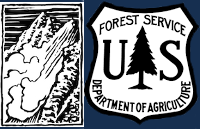Snowpack and Avalanche Discussion
<p><span><span><span><span><span><span>Human-triggered avalanches are likely on wind-loaded slopes today. Recent snow was drifted into thicker and stiffer slabs which have been easy to trigger, and will remain reactive for at least another day. </span></span></span></span></span></span></p>
<p><span><span><span><span><span><span>Yesterday we witnessed and received reports of natural and rider triggered </span></span></span></span></span></span><span><span><span><strong><span><span>wind slab avalanches</span></span></strong></span></span></span><span><span><span><span><span><span> breaking 1-2 feet deep and 20-200 feet wide (</span></span></span></span></span></span><a href="https://www.mtavalanche.com/avalanche-activity"><span><span><span><span… activity list</span></span></u></span></span></span></span></span></a><span><span><span><span><span><span>). Notable avalanches among yesterday’s activity were a couple snowmobiler triggered slides in the southern Madison Range (</span></span></span></span></span></span><a href="https://www.mtavalanche.com/node/34102"><span><span><span><span><span><…;), and natural and snowboarder triggered avalanches near Cooke City (</span></span></span></span></span></span><a href="https://www.mtavalanche.com/node/34096"><span><span><span><span><span><…;, </span></span></strong></span></span></span><a href="https://www.youtube.com/watch?v=q3OxZUjHYfs"><span><span><span><span><s…;
<p><span><span><span><span><span><span>Today similar slides can be triggered and be large enough to bury or injure a person. Even smaller slides can easily knock you off your feet and be dangerous in terrain with trees, cliffs or rocks. Avoid slopes steeper than 30 degrees that have recent wind-loading. Seek out slopes sheltered from wind, and consider smaller slopes with clean runouts that minimize the potential size and consequences of a slide.</span></span></span></span></span></span></p>
<p><span><span><span><strong><span><span>Persistent slab avalanches</span></span></strong></span></span></span><span><span><span><span><span><span> are possible with weak, sugary layers of facets and surface hoar buried 1-3 feet deep below the last week’s snow. We have not seen much, if any, recent activity on these layers, and they have shown mixed results in stability tests (</span></span></span></span></span></span><a href="https://www.mtavalanche.com/node/34085"><span><span><span><span><span><…’s observation from Lionhead</span></span></u></span></span></span></span></span></a><span><span><span><span><span><span>, </span></span></span></span></span></span><a href="https://www.mtavalanche.com/node/34067"><span><span><span><span><span><… observation from Cooke</span></span></u></span></span></span></span></span></a><span><span><span><span><span><span>). A couple larger slides near Cooke City a week ago, on </span></span></span></span></span></span><a href="https://www.mtavalanche.com/images/25/avalanche-north-crown-butte"><spa… Butte</span></span></u></span></span></span></span></span></a><span><span><span><span><span><span> and </span></span></span></span></span></span><a href="https://www.mtavalanche.com/images/25/avalanche-east-henderson"><span><… Mtn.</span></span></u></span></span></span></span></span></a><span><span><span><span><span><span>, might have broken on persistent weak layers. These show types of terrain where a larger persistent slab avalanche might be possible and are worth avoiding for now: big slopes that are heavily wind-loaded below prominent ridgelines. Other areas where these weak layers might have been more well preserved are </span></span></span></span></span></span><a href="https://www.mtavalanche.com/node/34043"><span><span><span><span><span><…. Ellis</span></span></u></span></span></span></span></span></a><span><span><span><span><span><span>, </span></span></span></span></span></span><a href="https://www.mtavalanche.com/node/34080"><span><span><span><span><span><… Rind</span></span></u></span></span></span></span></span></a><span><span><span><span><span><span> and </span></span></span></span></span></span><a href="https://www.mtavalanche.com/node/33944"><span><span><span><span><span><… Fork</span></span></u></span></span></span></span></span></a><span><span><span><span><span><span>.</span></span></span></span></span></span></p>
<p><span><span><span><span><span><span>Carefully evaluate the snowpack for recent wind-loading and buried weak layers before getting onto steeper slopes. Throughout the forecast area the avalanche danger is CONSIDERABLE on wind-loaded slopes and MODERATE otherwise.</span></span></span></span></span></span></p>
<p><span><span><span><span><span><span>Special note: At lower elevations around the valleys snow depths are deep, particularly on steep slopes that typically don’t hold much snow and avalanche potential. Dave noted this abundance of snow in Sourdough canyon and made a </span></span></span></span></span></span><a href="https://www.youtube.com/watch?v=LYqruI9gUp0"><span><span><span><span><s…; and </span></span></span></span></span></span><a href="https://www.mtavalanche.com/node/34062"><span><span><span><span><span><…; with avalanche concerns and travel advice to keep in mind for these areas.</span></span></span></span></span></span></p>
Upcoming Avalanche Education and Events
Our education calendar is full of awareness lectures and field courses. Check it out: Events and Education Calendar
